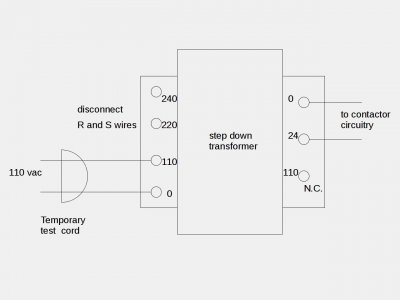- Joined
- Feb 2, 2013
- Messages
- 3,627
Do you have a multimeter?
A resistance test could be performed on all the terminals
Put the rotary switch in the center position, pick a contact to start with and test continuity between every other contact
You should not have continuity between switch poles in the center position
Select the forward or reverse position on the rotary switch and repeat the continuity check on all contacts of the switch and record the results
You can then ascertain the pin out of the rotary switch , the circuit will be simpler to wire from there
A resistance test could be performed on all the terminals
Put the rotary switch in the center position, pick a contact to start with and test continuity between every other contact
You should not have continuity between switch poles in the center position
Select the forward or reverse position on the rotary switch and repeat the continuity check on all contacts of the switch and record the results
You can then ascertain the pin out of the rotary switch , the circuit will be simpler to wire from there


